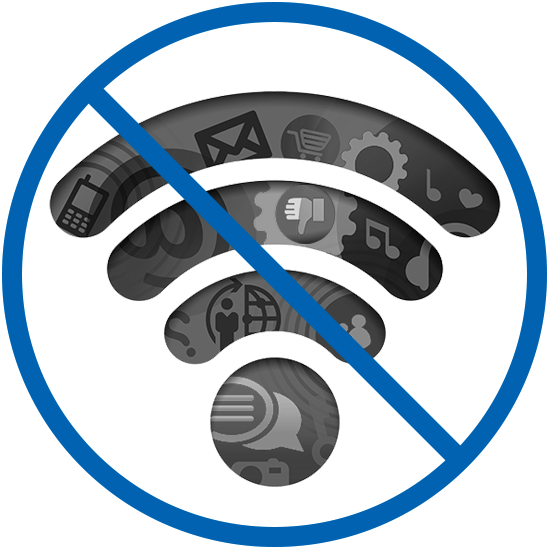We know how important it is for you to have a strong WiFi signal throughout your home. That’s why many modern gateways (also known as routers, modems or access points) have powerful features designed to help you get the strong connections you want. Here are two of them:
Band steering: keeping you on the road less traveled.
Imagine a single lane highway that carries all the traffic both in to, and out of, a town. If it’s a fair-sized town, that road could get pretty congested at times, and vehicles traveling on it can interfere with each other.
Now imagine if that same road was widened into two lanes. Congestion would be halved, and it would be able to carry twice as much traffic.
WiFi is a lot like that.
In the beginning, there was only one WiFi frequency: 2.4 GHz—a single road. As WiFi became more popular, the 5 GHz band was introduced, doubling the amount of traffic a WiFi network can handle. You can learn more about Dual-Band routers here.
Older devices can still only operate on the 2.4 GHz band, but newer ones can operate on both (depending on the style chip the device manufacturer installs). However, in most cases, the device chooses the band. For example, your brand new phone might stay on the 2.4 GHz band as long as it can connect to it, even though there may be less congestion on the 5 GHz band. It will only switch to the 5 GHz band if you tell it to or if it can no longer connect to the 2.4 GHz band.
Some modern gateways don’t leave the choice up to your devices. They monitor how much traffic there is on the 2.4 GHz band and, if it’s too congested, will steer your devices to the less traveled 5 GHz band. Of course, if you still have old devices that can only connect on 2.4 GHz, these gateways will leave them where they are.
Node steering: finding you the best connection.
If you’ve installed a Whole Home WiFi solution in your home, you may have one or more smaller boxes in different parts of your home. These units ‘mesh’ together to expand your WiFi coverage across your entire property—perhaps even to your garage and front and back yards. They receive the signal from your primary gateway and transmit it further afield. In this situation, both the gateway and each of your additional units are referred to as “nodes”.
When you move around with your devices, you’ll move away from your primary gateway and towards one of the other units. Or you may move from one unit’s coverage area to another. In each case, the system will automatically steer—or switch—your devices to the gateway or unit that delivers the strongest signal. You don’t have to do a thing.
Contact your service provider
If you’re ready to enjoy the superior online experience and other benefits that come with Carrier-Class Mesh WiFi, contact your service provider. They’ll give you everything you need to upgrade your current WiFi network to a high-performance Mesh WiFi system, and provide you the support you need—so you can enjoy worry-free WiFi that just works.


